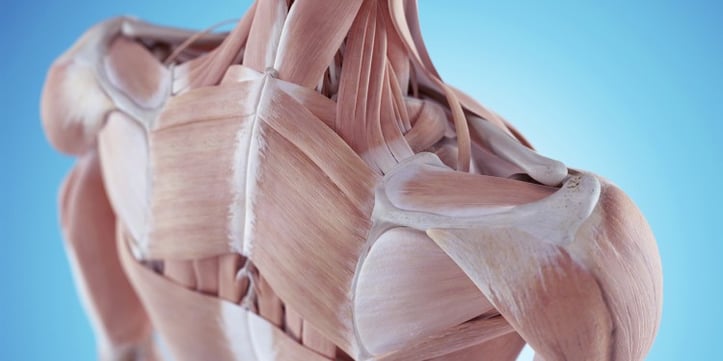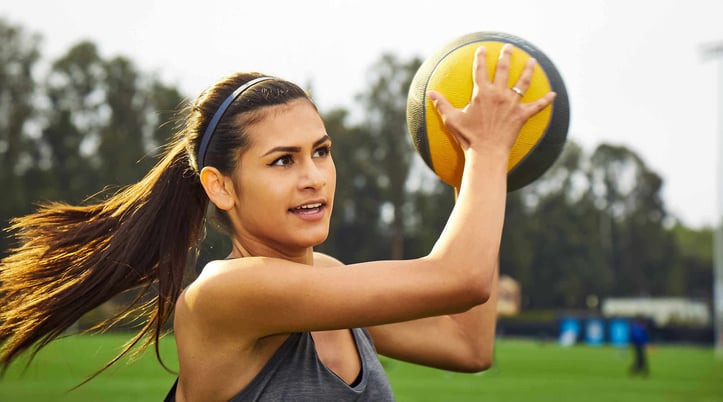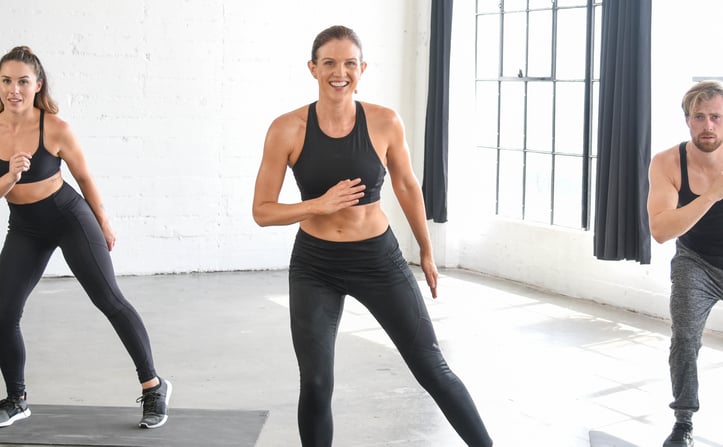
Introduction
Shoulder and rotator cuff injuries can be a significant setback for fitness enthusiasts, whether you're a beginner or an intermediate exerciser. In this blog post, we will delve deeper into the topic of preventing these injuries through corrective exercise programming. Building on the knowledge from Part 1, we will explore additional training principles, unique insights, and practical strategies to help you strengthen your shoulders and reduce the risk of injury.
Understanding the Training Principles
Overcompensation and Strength Gains
One of the fundamental principles of strength training is the concept of overcompensation. When you subject your muscles to a challenging workout, they experience microscopic damage. During the recovery period, your body repairs and rebuilds these muscles, making them stronger and more resilient. This process is known as overcompensation. By progressively increasing the intensity of your workouts over time, you can continue to stimulate muscle growth and strength gains.
According to a study published in the Journal of Strength and Conditioning Research, progressive overload is essential for muscle hypertrophy and strength development. By gradually increasing the load, volume, or intensity of your exercises, you can challenge your muscles and promote adaptation. However, it's important to note that progression should be gradual and individualized to avoid overtraining and injury.
Energy System Function
Another important aspect of training is understanding the energy systems that your body uses during exercise. The three main energy systems are the phosphagen system, the glycolytic system, and the oxidative system. Each system has its own characteristics and contributes to energy production depending on the intensity and duration of the exercise.
For shoulder and rotator cuff exercises, the phosphagen system is primarily used for short, high-intensity bursts of activity. This system relies on stored ATP (adenosine triphosphate) and creatine phosphate to provide quick energy. The glycolytic system, on the other hand, is responsible for producing energy during moderate-intensity exercise lasting up to a few minutes. Finally, the oxidative system is the primary energy source for long-duration, low-intensity activities.
Understanding the energy systems can help you design your training program to target the specific energy demands of shoulder and rotator cuff exercises. For example, if you're looking to improve your strength and power, you may focus on exercises that primarily rely on the phosphagen system, such as plyometric exercises or explosive shoulder presses. If you're aiming to increase your endurance and muscular endurance, you may incorporate exercises that target the oxidative system, such as endurance-based shoulder stability exercises.
Unique Insights
Training Adjustments for Different Physiques and Goals
Not everyone has the same physique or fitness goals, and it's important to tailor your training program accordingly. For example, if you have a naturally rounded shoulder structure, you may be more prone to shoulder impingement syndrome. In this case, it's important to focus on exercises that improve shoulder mobility and stability, such as scapular retraction exercises and external rotation exercises.
On the other hand, if you're an athlete who relies on overhead movements, such as a pitcher or a volleyball player, you may need to focus on exercises that specifically target the rotator cuff muscles and improve shoulder strength and endurance. This may include exercises such as rotator cuff strengthening exercises, plyometric shoulder exercises, and eccentric shoulder exercises.
Common Mistakes and How to Correct Them
Even experienced exercisers can make mistakes when performing shoulder and rotator cuff exercises. One common mistake is improper form, which can lead to muscle imbalances and increased risk of injury. For example, when performing a shoulder press, it's important to keep your shoulders in a neutral position and avoid shrugging your shoulders up towards your ears.
Another common mistake is overtraining the shoulder muscles without adequately strengthening the rotator cuff muscles. This can lead to muscle imbalances and increased risk of shoulder injuries. To avoid this, it's important to include a variety of exercises in your training program that target both the shoulder muscles and the rotator cuff muscles.
Finally, it's important to listen to your body and avoid pushing through pain. If you experience pain or discomfort during an exercise, stop immediately and consult with a qualified fitness professional. They can help you identify the source of the pain and develop a personalized training program that addresses your specific needs and goals.
Practical Strategies
A Week of Shoulder and Rotator Cuff Exercises
Here's a sample week of shoulder and rotator cuff exercises that you can incorporate into your training program:
Monday: Strength Training
- Shoulder Press: 3 sets of 8-10 reps
- Lateral Raise: 3 sets of 10-12 reps
- Bent-Over Reverse Fly: 3 sets of 10-12 reps
- Scapular Retraction: 3 sets of 15-20 reps
Tuesday: Mobility and Stability Training
- Shoulder Circles: 3 sets of 10 reps (forward and backward)
- Wall Angels: 3 sets of 10 reps
- External Rotation with Resistance Band: 3 sets of 10-12 reps
- Prone Y Raise: 3 sets of 10-12 reps
Wednesday: Rest or Active Recovery
- Take a day off from exercise or engage in light activities such as walking, yoga, or stretching.
Thursday: Strength Training
- Incline Dumbbell Press: 3 sets of 8-10 reps
- Front Raise: 3 sets of 10-12 reps
- Rear Delt Fly: 3 sets of 10-12 reps
- Scapular Protraction: 3 sets of 15-20 reps
Friday: Mobility and Stability Training
- Shoulder Stretch: 3 sets of 30 seconds (each side)
- Doorway Stretch: 3 sets of 30 seconds
- Internal Rotation with Resistance Band: 3 sets of 10-12 reps
- Prone T Raise: 3 sets of 10-12 reps
Saturday and Sunday: Rest or Active Recovery
- Enjoy your weekend and give your body time to recover. You can engage in light activities such as walking, hiking, or swimming.
Overcoming Plateaus
Plateaus are a common occurrence in strength training, and they can be frustrating for exercisers. However, there are several strategies that you can use to overcome plateaus and continue making progress.
One strategy is to change your training program. This may involve changing the exercises, the reps and sets, the intensity, or the frequency of your workouts. By introducing new stimuli to your muscles, you can challenge them in different ways and promote further adaptation.
Another strategy is to incorporate progressive overload. This means gradually increasing the load, volume, or intensity of your exercises over time. For example, you can increase the weight you use for shoulder presses or increase the number of reps and sets you perform for lateral raises.
Finally, it's important to be consistent and patient. Strength training takes time and effort, and it's normal to experience plateaus along the way. By staying committed to your training program and making small adjustments as needed, you can overcome plateaus and continue making progress towards your fitness goals.
Conclusion
Preventing shoulder and rotator cuff injuries through corrective exercise programming is essential for fitness enthusiasts of all levels. By understanding the training principles, incorporating unique insights, and implementing practical strategies, you can strengthen your shoulders and reduce the risk of injury. Remember to listen to your body, start slowly, and gradually increase the intensity of your workouts over time. With consistency and dedication, you can achieve your fitness goals and enjoy a healthy, active lifestyle.
FAQs
1. How often should I perform shoulder and rotator cuff exercises?
It's recommended to perform shoulder and rotator cuff exercises 2-3 times per week, with at least one day of rest in between workouts. This allows your muscles time to recover and grow.
2. Can I do shoulder and rotator cuff exercises at home?
Yes, you can do shoulder and rotator cuff exercises at home with minimal equipment. Some examples of exercises that you can do at home include shoulder presses, lateral raises, bent-over reverse flys, and scapular retraction exercises. You can use dumbbells, resistance bands, or even household items such as water bottles or cans as weights.
3. What should I do if I experience pain or discomfort during shoulder and rotator cuff exercises?
If you experience pain or discomfort during shoulder and rotator cuff exercises, stop immediately and consult with a qualified fitness professional. They can help you identify the source of the pain and develop a personalized training program that addresses your specific needs and goals. It's important to listen to your body and avoid pushing through pain, as this can lead to further injury.

Fit vs Fat: Decoding Health's True Ruler

Pump Up Your Heart: Science-Driven Weight Loss

Wellness Technology: Your Path to Sustainable Weight Loss

A Sensible Guide to Dietary New Year's Resolutions

Prevent Shoulder and Rotator Cuff Injuries with Corrective Exercises

Overcome Fitness Plateaus: 4 Tips for Success

10 x 10 Thanksgiving Day Circuit: A Fitness Guide

Unleash Your Fitness Potential with Kit Rich's Training Secrets

The Future of Fitness: A Guide for Beginners to Intermediates

